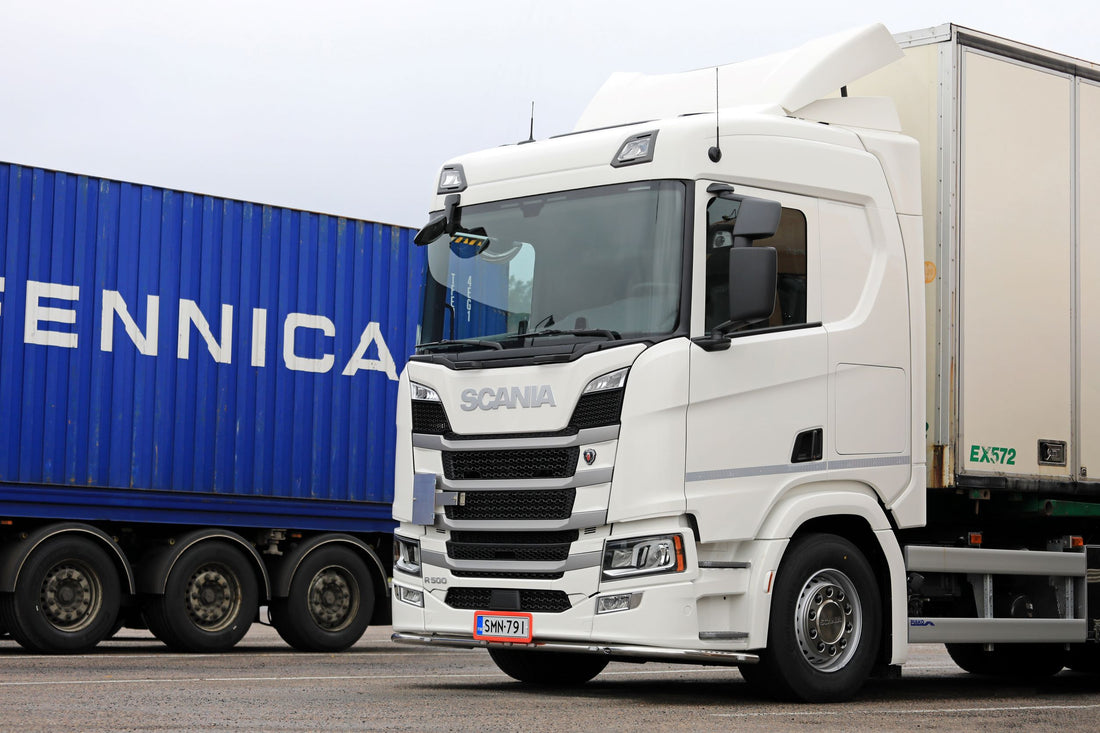
2022 Brake Safety Week is Here!

Have you checked your vehicle’s brake system lately? It might be time to give them a good look!
The Commercial Vehicle Safety Alliance (CVSA) is holding its annual Brake Safety Week from now through August 27th. During this time, law enforcement officers in Canada, Mexico, and the U.S. will conduct brake system inspections on large trucks, buses, and other commercial motor vehicles (CMVs) to identify brake-system violations. Having properly functioning brakes is important to truck drivers, the life of their vehicles, and the safety of others around them on the road.
Read on to learn about what Brake Safety Week is, what is inspected during these stops, and how you can prepare for these inspections and spread awareness about this campaign.
What is Brake Safety Week?
CVSA created Brake Safety Week as an initiative aimed at promoting educational brake-safety efforts and encouraging drivers to inspect their brake systems, and since 1998, officers have inspected over 3.4 million brake systems across North America.
The focus area for this year’s Brake Safety Week is brake hosing and tubing inspections. Brake hosing chafing is one of the most common vehicle violations and can have a serious effect on a motor carrier’s safety rating.
Overall, brake-related violations comprise of 38.9% of all out-of-service (OOS) vehicle violations, the largest percentage of these infractions.
What Are the Goals of Brake Safety Week?
CVSA’s Brake Safety Week looks to combat bad brake systems by achieving the following goals:
- Identify and remove commercial motor vehicles with inspection violations and place them on the North American Standard Out-of-Service (OOS) list until the conditions are fixed.
- Acknowledge CMVs that do not have inspection violations with a certified .
- Encourage proactive vehicle maintenance ahead of this week.
- Highlight the hard work and commitment to safety by inspectors, drivers, and motorists.
- Remind drivers about the importance of proper brake support.
- Provide outreach and brake-safety efforts.

Inspection: How Does It Work?
Law enforcement officers and inspectors will be conducting inspections on commercial motor vehicles that have been pulled over. When the vehicle inspection happens, inspectors will be looking at the brake system, including:
- Missing, non-functioning, loose, contaminated, or cracked parts
- Non-manufactured holes (i.e., rust holes or holes created by rubbing or friction)
- Broken springs
- Audible air leaks around brake components and lines
- S-Cam flip-over
- Measurement of pushrod travel
- Lengths of slack adjusters
- Sizes of air chambers on each axle
- Brake-system warning devices (i.e., ABS malfunction lamp(s) and low air-pressure warnings)
- Breakaway systems
- Tractor protection systems, including the bleed-back systems on trailers
For other portions of the full inspection, you can read Inspection Vehicle Cheat Sheet.
What Are the Results of Brake Safety Week?
The results from 2021 Brake Safety Week show that 35,764 commercial motor vehicles were inspected. Twelve percent of those vehicles (or roughly 4,291 vehicles) were placed out of service due to violations of critical brake-related inspection items. This percentage is on par with 2020’s campaign, where 5,228 out of 43,565 vehicles inspected were placed out of service.
There were also 5,667 brake hose chafing violations cited last year during Brake Safety Week, which is a difference of 15% from 2020’s total brake hose chafing violations of 6,697.

How to Prepare for Brake Safety Week
Be sure to inspect your vehicle’s brake system and identify any issues that are preventing it from operating properly. CVSA encourages people to check their brakes before the week starts. You can use inspection checklist providing all of the steps you can do before, during, and after inspecting your vehicle.
With the focus area for this year’s campaign being hosing and tubing, CVSA has also provided brake hosing and tubing tips from inspectors that will ensure your hoses and tubing are functioning properly.
Lastly, CVSA provides an over brake systems and inspections that commercial motorists may have questions on.
At U.S. Cargo Control, We Care About Your Safety
Properly functioning brakes are critical to safe driving. We want truck drivers to continue inspecting their vehicles’ brake systems so they can prevent any dangerous situation from happening on the road.
Other Reads You May Like:
The Dos and Don’ts for Load Securement on Trailers
Using Tiedowns to Secure Cargo Safely and Legally
What’s the Difference Between Direct and Indirect Tiedowns?
Working Load Limit, Breaking Strength & Safety Factor: What Do They Mean?



